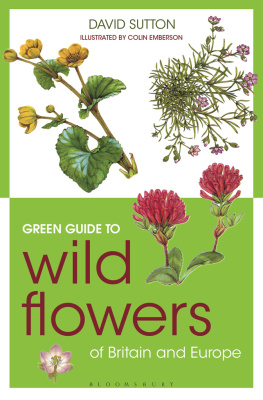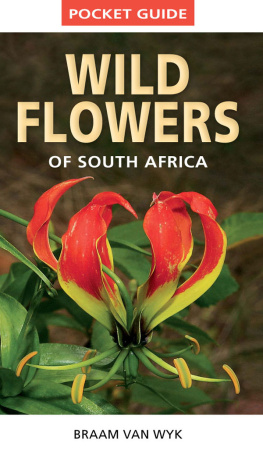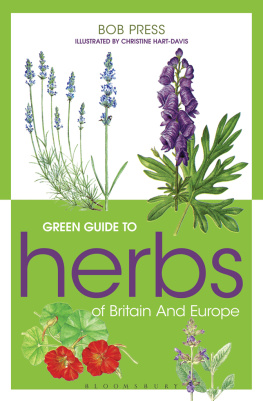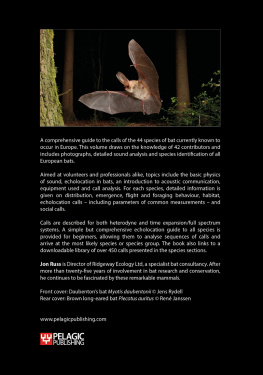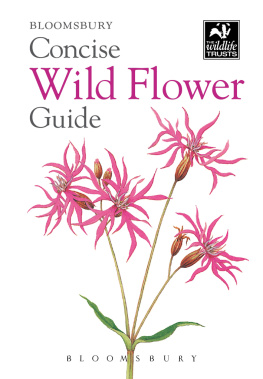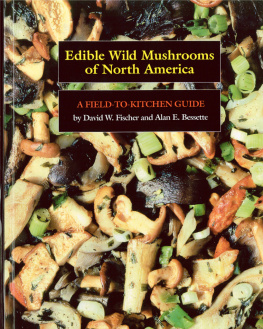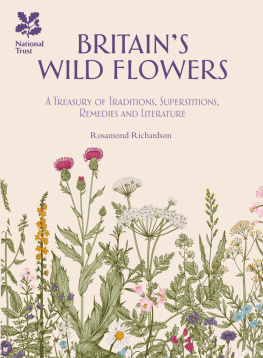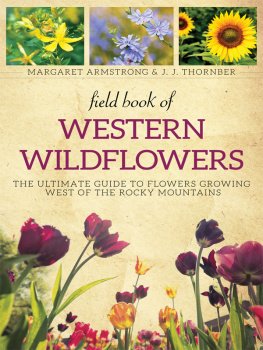

Bloomsbury Natural History
An imprint of Bloomsbury Publishing Plc
50 Bedford Square | 1385 Broadway |
London | New York |
WC1B 3DP | NY 10018 |
UK | USA |
www.bloomsbury.com
Bloomsbury is a registered trademark of Bloomsbury Publishing Plc
This electronic edition published in 2016 by Bloomsbury Publishing Plc
Bloomsbury Publishing Plc, 2016
photographs Shutterstock
David Sutton has asserted his right under the Copyright, Designs and Patents Act, 1988, to be identified as Author of this work.
All rights reserved
You may not copy, distribute, transmit, reproduce or otherwise make available this publication (or any part of it) in any form, or by any means (including without limitation electronic, digital, optical, mechanical, photocopying, printing, recording or otherwise), without the prior written permission of the publisher. Any person who does any unauthorised act in relation to this publication may be liable to criminal prosecution and civil claims for damages.
No responsibility for loss caused to any individual or organization acting on or refraining from action as a result of the material in this publication can be accepted by Bloomsbury or the author.
British Library Cataloguing-in-Publication Data A catalogue record for this book is available from the British Library.
Library of Congress Cataloguing-in-Publication data has been applied for.
ISBN: PB: 978-1-4729-2720-0
ePDF: 978-1-4729-2721-7
ePub: 978-1-4729-2722-4
To find out more about our authors and books visit www.bloomsbury.com. Here you will find extracts, author interviews, details of forthcoming events and the option to sign up for our newsletters.
Introduction
This guide covers 150 species of wild flowers most likely to be encountered in Britain and adjacent parts of north-western Europe, and provides an introduction to the thousands of species growing in the area. For ease of reference, flowers of similar structure, ranging from the simple to the complex, have been grouped together so that comparisons and distinctions can be made. The whole plant is shown from the ground upwards, except where just a flowering or fruiting shoot is more informative. In addition, close-up details of individual flowers and fruits are given to make identification more accurate.
It is important to take the book to the plant so that, with the use of the keys and comparison with the descriptions and illustrations, it can be identified in its natural surroundings. Never destroy a plant by bringing it home for identification; wild flowers are becoming ever scarcer and it is vital to conserve their fragile beauty for future generations.
How to Identify Wild Flowers
A plant is identified by careful observation of the way it grows and looks, with attention being paid to details of its stems, leaves, flowers and fruit. Plants may grow and flower in a single year (annual), or flower only in the second year (biennial), or over many years (perennial). Stems are variously upright, creeping or climbing, with the leaves either all growing at the base of the plant or along the stems. Stem-leaves may be arranged spirally, in pairs, or in rings. Their general outline, the shape of the tip or base, and details of the edge are all important distinguishing features; many leaves are lobed or divided into leaflets.

Flowers are usually the most obvious feature of these plants and provide the most important characteristics for identification. The main parts of the flower include petals, sepals, stamens and ovaries; the relative size of these parts, their number and the degree to which they are joined should all be taken into account. Petals are generally the largest, most attractive part of flowers; beneath these are usually several green sepals. Sometimes both petals and sepals are similar and then together are termed the perianth. Within the petals and sepals are the pollen-producing stamens, the male parts of the flowers. The female parts of the flower are the ovaries, each with one or more pollen-receptive stigmas often borne on a stalk-like part called the style. Flowers usually have both male and female parts and are termed hermaphrodite, but there may be separate male and female flowers, sometimes on different plants. Seeds develop in the fertilised ovary, which ripens and turns into the fruit. This can be juicy and berry-like, or dry. The latter types of fruit may open by pores or by splitting, or remain closed and nut-like.
Large coloured petals serve an important biological function, as they are attractive to insects which transfer the pollen from stamens to stigmas, thus achieving fertilisation. But flowers can also be pollinated by the wind, and these types are usually green or brown and small. Flowers may grow singly but they are often clustered together into heads; plants of the Carrot family, for example, usually have distinctive umbrella-shaped flower-heads. In relatives of the Daisy, the flower is actually a very compact head of numerous tiny flowers.
Families of Wild Flowers
The species in this book are grouped into 52 families according to shared characteristics, some of which are described here.
Hops, Nettles and Mistletoes The separate male and female plants have small flowers and commonly have paired leaves. Hops are climbers; the cone-like fruit has papery scales. Nettles mostly have stinging leaves but some species are stingless. Mistletoe is a parasite on branches of trees.
Goosefoots and Docks Most have small, hermaphrodite flowers and alternating leaves. The small dry fruit is covered by the remains of the flower. Goosefoots, often with succulent stems and leaves, include many plants of salt-marshes. Docks have stipules forming a papery tube.
Pinks These typically have paired leaves and flowers with 5 separate, equal petals. The fruit is a capsule.
Water-lilies and Buttercups These mostly have leaves alternating along the stem. Five or more petals are common and there are numerous stamens. Water-lilies have only one ovary; they are water plants with floating leaves. Most Buttercups have numerous ovaries.
Poppies, Cabbages and Fumitories The 4 separate petals are equal, except in Fumitories. Poppies have many stamens, Cabbages 6 and Fumitories only 2. Cabbages have pod-like fruits with two halves detaching leaving a thin inner wall; Poppies often have capsules; the small fruit of Fumitories usually does not open.
Sundews, Stonecrops and Saxifrages These plants typically have 5 equal, separate petals. Sundews and Saxifrages have a single capsule but Stonecrops have a cluster. The leaves of Stonecrops are succulent but those of Sundews have movable, sticky hairs which catch insects.
Roses Many species are woody; most have alternating leaves with a pair of stipules. The flowers typically have 5 equal, separate petals and many stamens. Fruits can be berry-like or dry and nut-like, and are often borne in a cluster.
Peas The flowers usually have a large upper petal, 2 smaller side petals and a pair of lower petals joined around the 10 stamens, ovary and stigma. The fruit is typically a pod which splits lengthwise.
Next page
